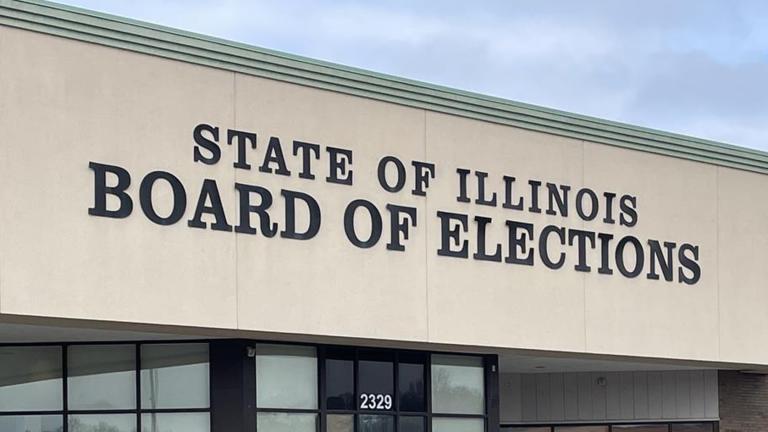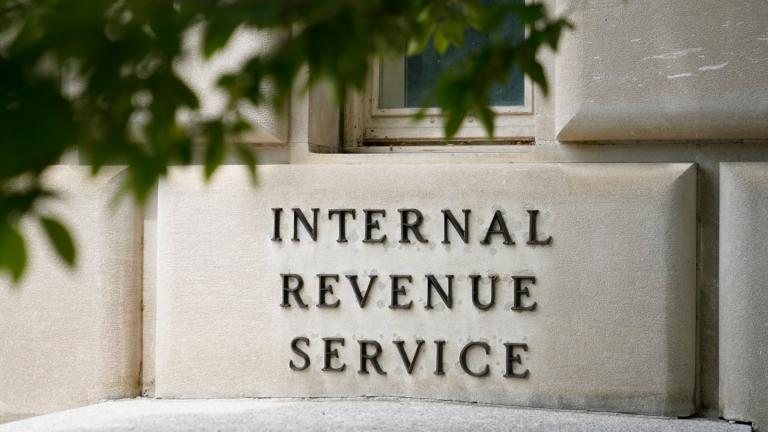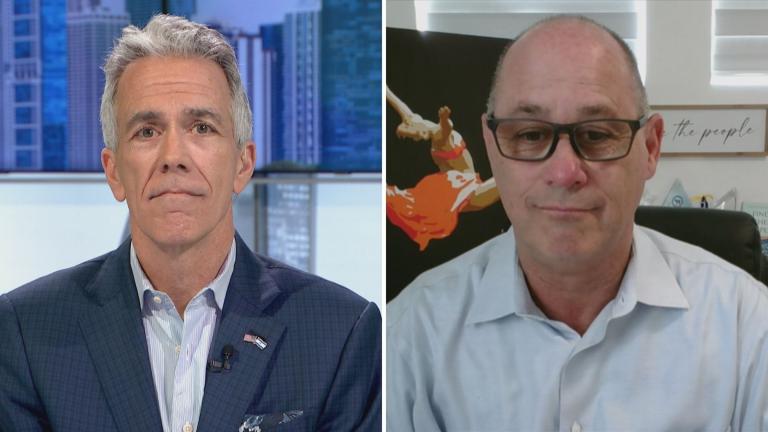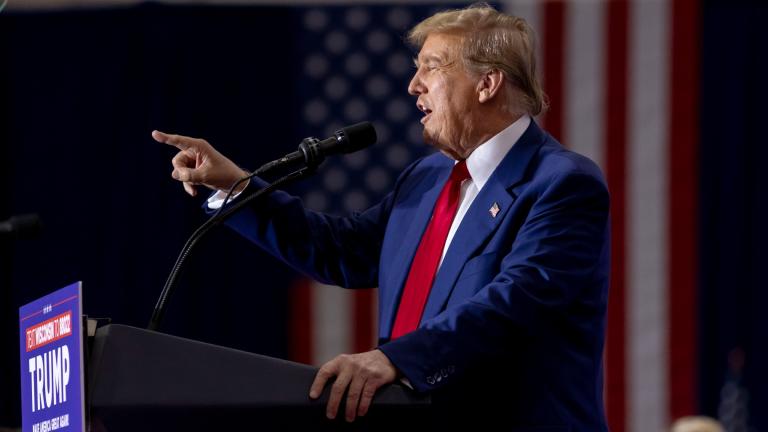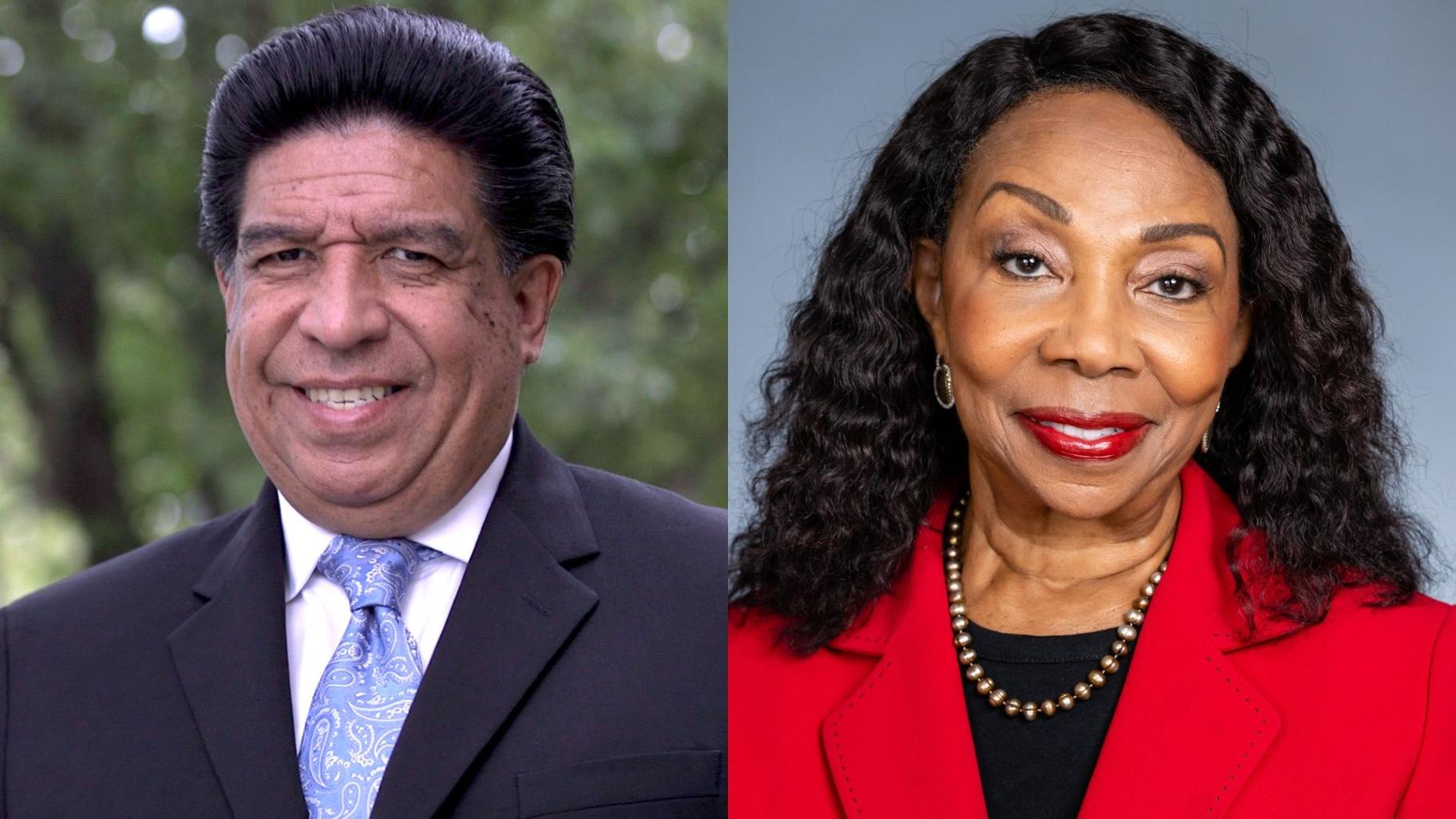 1st District Appellate Justice Jesse Reyes and state Supreme Court Justice Joy Cunningham. (Provided)
1st District Appellate Justice Jesse Reyes and state Supreme Court Justice Joy Cunningham. (Provided)
By Hannah Meisel, Dilpreet Raju and Jerry Nowicki of Capitol News Illinois.
The race for one of the seven Illinois Supreme Court seats pits an appointed incumbent against a second-time candidate as the two Democrats vie for their party’s nomination next week.
Because no Republican has filed to run for the Cook County-based seat, it’s more than likely that Tuesday’s contest determines the ultimate winner of November’s election, too.
The matchup between Supreme Court Justice Joy Cunningham and 1st District Appellate Justice Jesse Reyes has turned up the volume on a conversation about diversity on the state Supreme Court, as Reyes has made a push for Latino representation a cornerstone of his campaign. Cunningham, meanwhile, is the state’s second Black woman justice, and one of five women on the court.
WTTW News 2024 Illinois Primary Voter Guide
Ahead of the March 19 primary election, Reyes sat down with Capitol News Illinois for an interview. Cunningham declined, citing timing issues with the court in session, but agreed to respond to written questions.
Cunningham and Reyes, who both earned their law degrees from the John Marshall Law School in Chicago in 1982, have spent comparable amounts of time on the bench. They overlapped as 1st District Appellate Court justices from 2012 until Cunningham was appointed to the Supreme Court in 2022.
Both have pegged themselves as progressive jurists who maintain judges have a responsibility in creating access to justice. Both have also emphasized a commitment to ruling in the public interest and with impartiality.
But there is daylight between the candidates – much of which has been created by Reyes positioning himself as challenger to Cunningham’s incumbent status. In the final countdown before Election Day, for example, Reyes criticized the Illinois Supreme Court’s inability to decide on whether to revoke the law license of now-convicted Chicago Ald. Ed Burke. He is the husband of former chief justice Anne Burke, whose seat the court appointed Cunningham to fill when Burke retired in 2022.
Reyes has made the appointment process a major issue in his campaign, as Illinois is the only state whose supreme court itself appoints a long-term replacement in the event of a vacancy.
But Cunningham leads in both campaign contributions and endorsements from political heavy hitters – including the backing of the Cook County Democratic Party – and recent history in the state’s high court elections has been mostly favorable to incumbents.
Career Trajectories
Cunningham was appointed to the Illinois Supreme Court in late 2022 after spending 16 years as an appellate judge. She had run for a seat on the high court in 2012 but finished a distant second in a four-way Democratic primary that was ultimately won by now-Chief Justice Mary Jane Theis.
Her appellate court win in 2006 was her first for elected office, although she served as an appointed associate judge for civil trials in Cook County from 1996 to 2000. Both before and after that four-year period on the bench, Cunningham was a top lawyer for two major Chicago-based hospitals.
That experience echoes her prior life in the health care field, where Cunningham was a critical care nurse. Responding to a CNI questionnaire, she wrote that her time as an ER nurse instilled “a deep understanding of the human condition and the real-life consequences of legal decisions on individuals and families.”
Cunningham, who volunteered at Planned Parenthood decades ago when still employed as a nurse, hasn’t shied away from that experience. She wrote that she “had the privilege of advocating for reproductive rights and women's health issues” at the clinics.
“This experience has reinforced my commitment to protecting individual liberties, promoting equality, and defending fundamental rights,” she wrote. “I bring this dedication to justice and equity to every case that comes before me, ensuring that all parties are treated fairly and impartially under the law.”
In 2004, Cunningham became the first Black woman elected to serve as president of the Chicago Bar Association.
After Reyes graduated law school the same year as Cunningham, he briefly worked in private practice as a personal injury and workers compensation attorney before jumping to a career as legal counsel for the city of Chicago.
For a decade beginning in 1985, Reyes worked as a senior attorney in the city’s law department. After that, he served a few years as counsel for the Chicago Board of Education before his appointment as Cook County associate judge in 1997.
In an interview with CNI, Reyes touted decisions he made during his time with the city’s board of education, where he said he oversaw policy and reform. Reyes said he discovered individual principals throughout the Chicago Public Schools system were making ad hoc decisions about whether to expel students. Some principals were making those determinations individually, while others had set up committees.
“Keep in mind that someone gets expelled from school, this is a mark that they carry for the rest of their life, right?” Reyes said. “It could have hindered them getting into good colleges or grad schools. My team decided we're going to provide a system where the students get their day in court, basically, and there are due process rights.”
Reyes recalled setting up a hearing process “with an objective, independent hearing officer” who would make a recommendation after giving both school officials and the student the right to present evidence and have legal representation. That decision would then be passed on to the board of education, which would make the final determination.
“That system is still in place now,” Reyes said. “They've tweaked it a little bit, but it's still in place. I saw and I felt that we needed to provide access to justice, in this case, to young school students who would potentially be expelled.”
Racial Representation and Judicial Philosophies
Reyes, who is of Mexican American descent, is a Chicago native raised in the city’s Pilsen and Bridgeport neighborhoods. After his appointment as an associate judge in 1997, he went on to win a circuit court judgeship in 2008 and an appellate court seat in 2012.
In early 2019, Reyes launched his first bid for Illinois Supreme Court to fill the vacancy created by retired Justice Charles Freeman – the first Black justice on the state’s high court. By then, the court had appointed P. Scott Neville, who is also Black, to replace Freeman. At the time, the rest of the justices were white.
Reyes announced his candidacy a few months before Latino and Black politicians publicly decried Justice Anne Burke’s appointment of white judges to represent predominantly Latino and Black areas in the Cook County judicial system.
Reyes came in second to Neville in a seven-way primary contest in which Reyes pushed for Latino representation on the court. Four years later, Reyes’ message is the same.
“We need to have diversity at all levels of the court, and in particular, at the highest court,” Reyes said. “I think we need to have a perspective and a voice that hasn't been heard before.”
The 2020 U.S. census saw the number of Illinoisans who identified as Hispanic or Latino increase from not quite 16% in 2010 to more than 18%. In Chicago, those identifying as Hispanic or Latino overtook African Americans as the second-largest racial or ethnic group, according to census data.
Reyes framed lack of Latino representation on the bench in Illinois as a barrier for access.
“I think it's important to have a lived experience…in terms of those issues and those concerns that people have with regards to our justice system,” Reyes said.
As an associate judge in Cook County’s traffic court division, Reyes said he worked to ease language barriers after noticing that some defendants “didn't really understand what they were doing in terms of pleading guilty to DUIs and things like that.”
Reyes also said he’d push for the Illinois Supreme Court to change current rules from merely permitting circuit court judges to offer brief training on implicit bias to potential jurors to requiring the practice.
The Reyes campaign and its backers have been sharply critical of Cunningham’s answers about diversity on the court in the final months of the campaign. At a candidate forum in January, Cunningham said it was “distracting to inject race into the race, no pun intended.”
And interviews with the Chicago Daily Law Bulletin and The Daily Line last month, Cunningham said it “makes no sense” to suggest the court “is not diverse because it does not have a Latino on it.”
“I think when the court was completely male and completely white, then you could call it a non-diverse court,” she told The Daily Line. “But now it has five women; it has three Black people. Justice Reyes’ argument taken to its logical extreme would mean that every single ethnic group in Illinois should have a representative on the court. And of course that’s impossible.”
Cunningham, who grew up in New York City as the daughter of immigrants from Panama and the Cayman Islands, is one of three Black justices on the court. Justice Lisa Holder White became the first Black Republican on the court when she was appointed in the summer of 2022.
Responding to CNI’s questionnaire, Cunningham wrote at length about her judicial philosophy mirroring the blindfold of Lady Justice, the centuries-old symbol that evolved from depictions of Greek and Roman goddesses.
“The blindfold serves as a powerful visual metaphor, conveying the idea that justice should be blind to the identities, appearances, and statuses of the individuals who seek it,” Cunningham wrote. “And by the same theory should be blind as to who are the justices that administer it.”
Appointments and the Power of Incumbency
Illinois is the only state in which the Supreme Court picks its own new long-term replacements when a judicial vacancy occurs. An appointed justice serves until the next general or judicial election if it is scheduled more than 60 days from the appointment, at which point they must face voters to retain the seat. Cunningham was appointed in December 2022, giving her a two-year runway to her first electoral test on the high court.
In most other states, the governor appoints a new justice in the event of a vacancy on the court, in some cases from a list of nominees put together by a commission. In two states – Virginia and Georgia – a justice is selected via the state legislature. Louisiana’s high court appoints its own replacements, but they serve only temporarily and are barred from running for a full term when the state holds a special election within a year of the vacancy. Not all state supreme courts are elected in the first place.
Reyes is eager to change the way vacancies are filled, not just on the state’s high court, but across Illinois’ courts. In an interview with CNI, he proposed establishing committees made up of retired judges, lawyers and community members who could give recommendations for potential replacements.
He said picking new judges by committee could only help the judiciary, “because, you know as we all know, we're constantly being criticized by the media and by the public for lack of transparency, for lack of openness.”
A coalition of Latino advocacy groups criticized Cunningham’s appointment in 2022, with Sylvia Puente, the leader of the Latino Policy Forum saying she was “dismayed” that her community “continues to be excluded by the state’s highest court.”
Cunningham declined to answer a question about the fairness of the appointment process in her candidate survey, citing her position on the court.
But if the recent past is an indicator, Cunningham’s incumbency will be an advantage come election night.
In 2020, Justice Thomas Kilbride became the first-ever Illinois Supreme Court justice to fail to reach the 60% vote threshold for retention. A 2014 campaign to unseat Justice Lloyd Karmeier came close. Both campaigns were extremely expensive efforts.
The Cunningham-Reyes race isn’t a retention race, but other high court contests in recent history also bode well for incumbents in non-retention partisan races for a 10-year term.
Both Reyes and Cunningham have fallen to incumbents in their separate past races for the court. Neville’s 2020 primary race to retain his seat after being appointed was a decisive nearly 49,000-vote victory over Reyes, while Cunningham received only 23% of the vote to Theis’ 48% in the 2012 primary.
Republican Justice Michael Burke lost his race to a Democrat in 2022 after Democrats in the legislature redrew the court’s districts in 2021 following Kilbride’s retention race loss, further cementing the party’s control of the court.
The only other time in recent history an appointed incumbent lost to a challenger was 2000, when Republican Justice Bob Thomas, a former Chicago Bears kicker, beat Justice S. Louis Rathje.
Capitol News Illinois is a nonprofit, nonpartisan news service covering state government. It is distributed to hundreds of print and broadcast outlets statewide. It is funded primarily by the Illinois Press Foundation and the Robert R. McCormick Foundation, along with major contributions from the Illinois Broadcasters Foundation and Southern Illinois Editorial Association.

